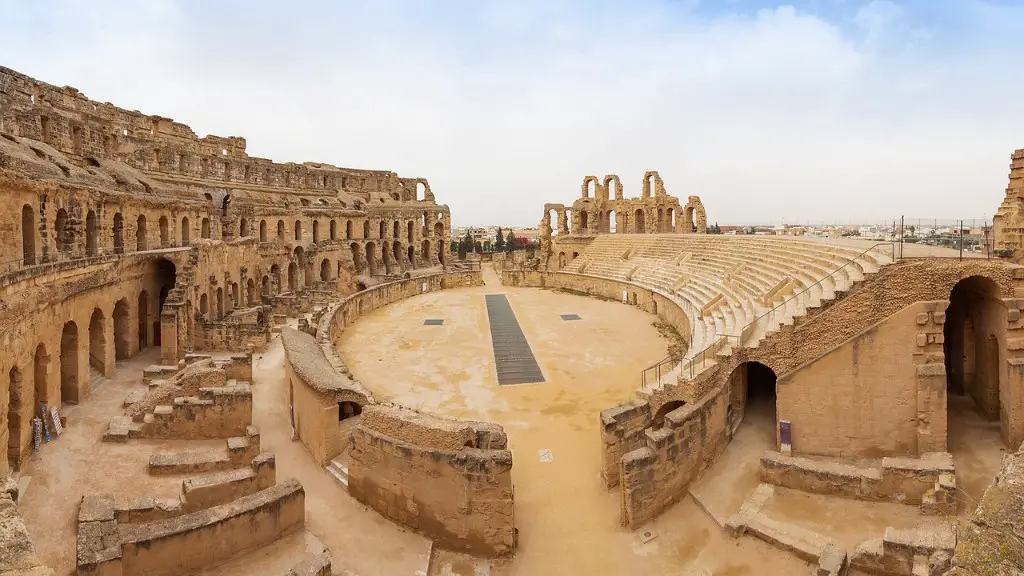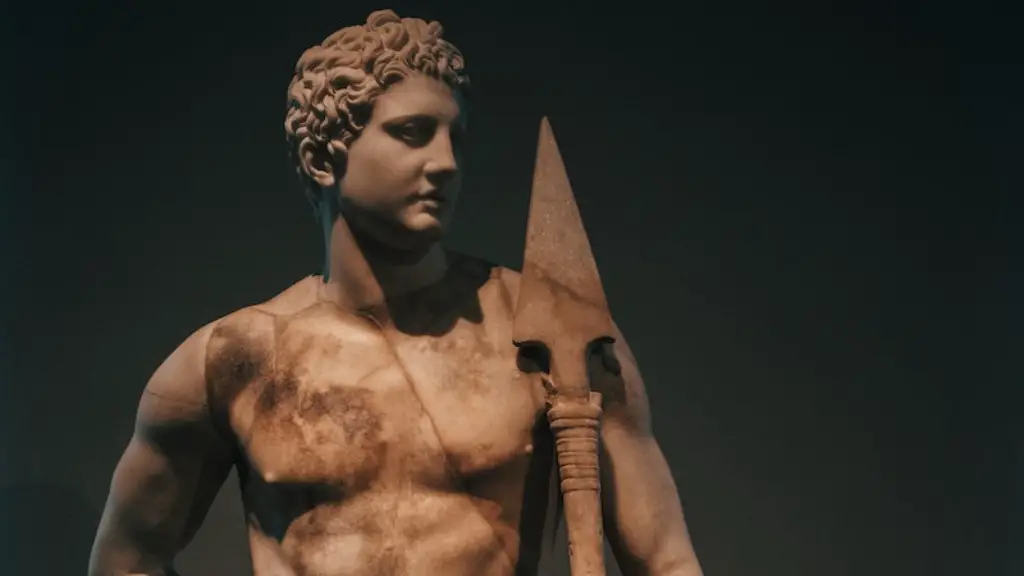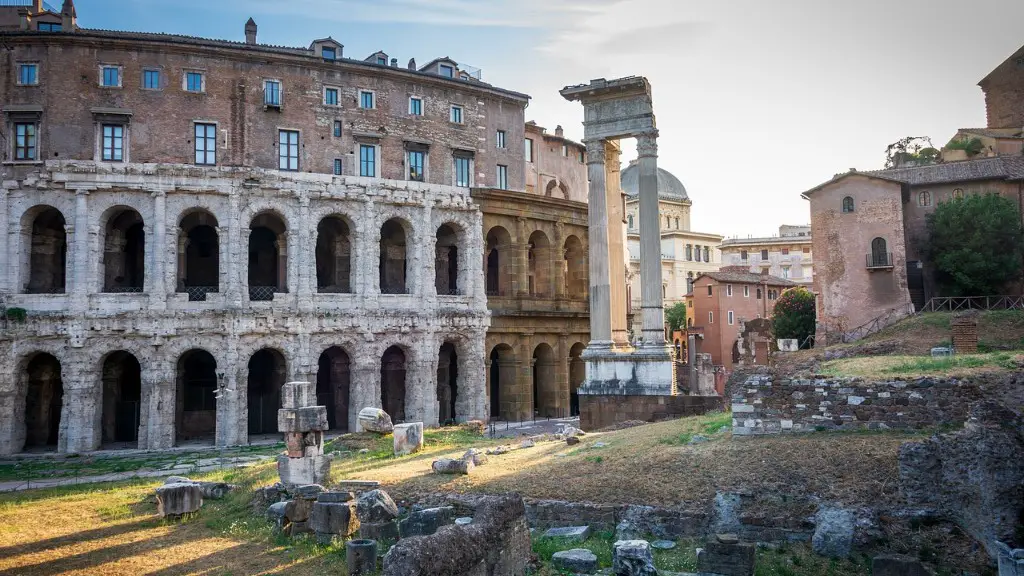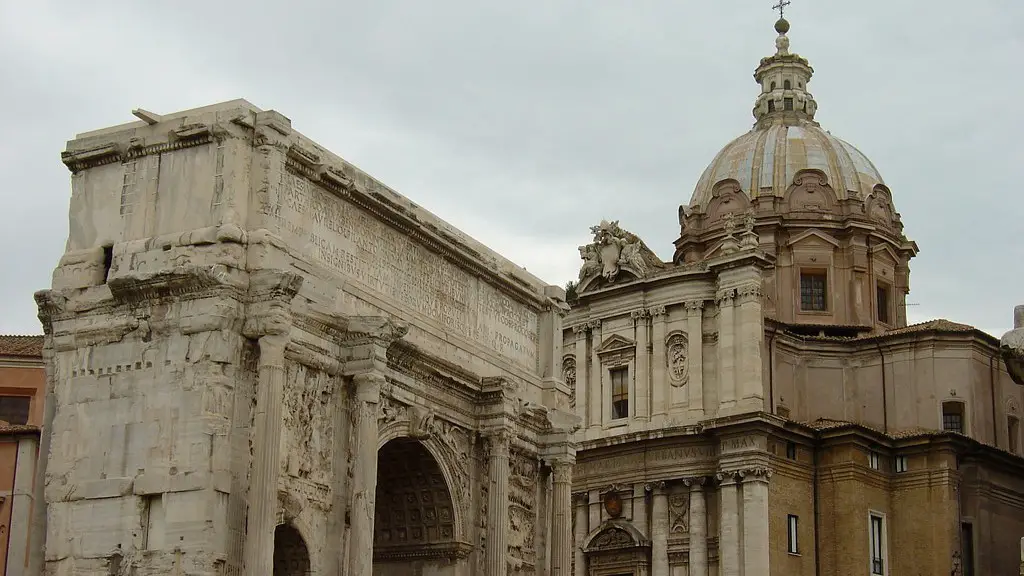Background Information
Ancient Rome was built on the Italian peninsula near the Mediterranean Sea. This made it a great trading hub and center of activity, giving it the ability to transform and develop faster. Rome was also strategically built in an area with hills and seven main roads that converged there, creating easy access to the city and making it a crossroad between cultures. The city itself started as a small community which grew into a powerful city-state.
Early Building Technologies
The early inhabitants of Rome used local materials to build their city. They used stone for buildings, and blocks of tufa for walls. Wooden structures were also used for houses, although this material is not as resistant to the passage of time. Rome’s technological aspect was also visible in its engineering, such as the introduction of roads and sewers as well as in the construction of the Cloaca Maxima, the city’s main sewer.
Legacy
Ancient Rome had many lasting influences on the world. Examples of how theRoman legacy was proved to be effective in the modern age, include the methods of governance, engineering, architecture and philosophy. Its language and culture were also highly influential in Europe and the Mediterranean world.
The Colosseum
One of the most recognizable symbols of Ancient Rome is the Colosseum. This grand structure was built as a grand arena for the people to watch gladiator contests and other forms of entertainment such as dramas and executions. The Colosseum is considered to be an architectural wonder of the Ancient Roman world and has been included on the UNESCO World Heritage List.
The Roman Forum
The Roman Forum was the center of Ancient Rome, comprising of temples, public squares, and other important civic buildings. It was the hub of governance, religion, trade, and everyday life in Ancient Rome. The Roman Forum still stands today and serves as a reminder of the rich history and powerful culture of Ancient Rome.
Impact on Society
Ancient Rome left an undeniable mark on the world of antiquity, and its influence can still be seen today. Its system of law and governance was respected by many cultures, and its accomplishments in engineering, architecture, and philosophy led to advancements in society that extended beyond the Roman world.
Analysis
It is evident that Ancient Rome was build on a strategical location, making it to one of the greates empires of the antiquity. The use of local materials, savvy engineering and advanced building techniques were also important to build the ancient city. Through its legacy, diverse Roman monuments such s the Colosseum still stand to this day as reminders of the impact that the Roman Empire had in history, having left a mark on society which goes beyond its boundaries.
Architecture and Technology
Although the Romans lacked the engineering know-how of their more modern counterparts, the Ancient Romans still excelled in the development and use of advanced architectural designs and technological advancements. They used a variety of different building materials, and built structures such as the Colosseum and the Pantheon which are still standing today and have become iconic symbols of Ancient Rome. Roman engineering was also highly advanced and featured noteworthy structural, hydraulic and sanitation systems, such as the Cloaca Maxima.
Economy
The Roman economy was highly advanced and developed, allowing it to become one of the most powerful empires of the world. Its economy was based on taxation, slavery, commerce and trade. Its coinage system was unrivaled in the ancient world, and its strong trading partnerships with other cultures and countries gave it great economic strength.
Culture
The culture of Ancient Rome was highly advanced and influential, being at the center of its rich and expansive empire. The Romans developed their own system of law, and their language and literature had a far reaching influence on other cultures. Roman advancements in philosophy, art and architecture were studied highly in the modern world and are still respected today.
Social Structure
The social structure of Ancient Rome was very structured, with different levels of society separated by power and wealth. At the top were the senatorial elite, followed by the knights, and then the common people. Slaves also formed a significant part of the Roman population, though they did not have any rights or power. The social structure of Ancient Rome was highly stratified, and exemplified the immense power the senatorial elite possessed.
Government
The Roman Republic was known for its stability and success, extending a great deal of power and influence throughout the Mediterranean region. The government system was based on a series of elected magistrates, including the two consuls who held the highest office in the state. This system of government was highly advanced and produced some of the most influential figures in history, such as Julius Caesar.
Legacy and Decline
The Roman Empire was an influential force in the ancient world and its legacy still remains in many areas of the modern world. Its advancements in engineering, architecture and philosophy led to innovations in many fields, and its language and culture spread throughout Europe and the Middle East. However, the Roman Empire eventually fell due to a combination of internal and external pressures, such as economic decline and foreign invasions. The legacy of Rome, however, still stands today as a reminder of its once-great power and influence.



